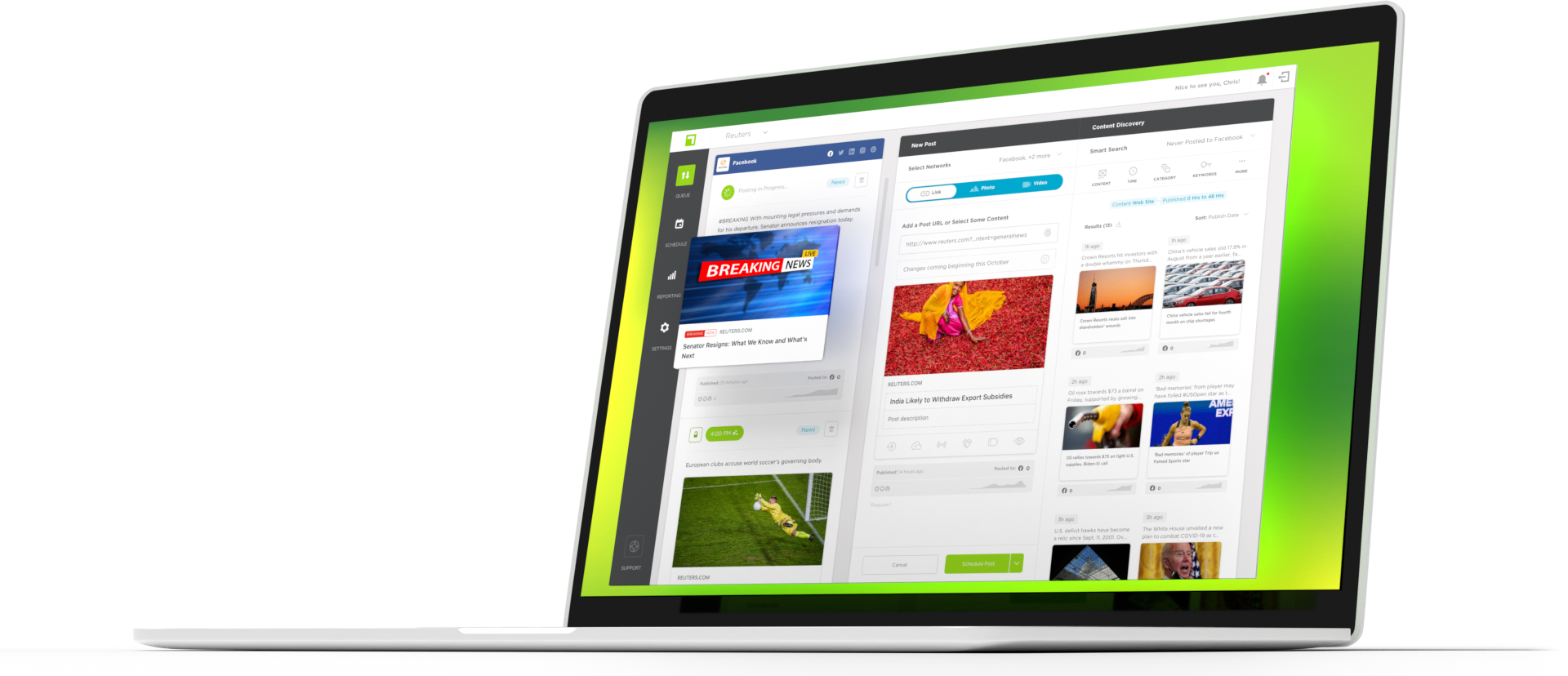If you’ve spent 5 minutes with an SEO expert, you’ve heard about the importance of social metadata. Despite the deluge of information, we continue to see prominent publishers make mistakes and underinvest in their metadata. Why is this?
Even if a publisher thinks they understand metadata, they may not fully understand how it impacts their business.
What is the importance of social metadata for publishers?
Social media has long surpassed search as the most common way for readers to find content. As a result, social content discovery has allowed publishers to build businesses around the success of their content. In short, you risk being left behind if you don’t participate on social media.
The social metadata publishers create control how their content is seen when shared on social media. Publishers who prioritize social metadata set themselves up to take advantage of the continued growth of social.
Which social metadata is important?
Facebook, Twitter, LinkedIn, and Pinterest are still the most significant social engagement and traffic sources for most publishers. Social media networks like Instagram and TikTok are opportunities for publishers to reach younger audiences and experiment with content and novel ways of capturing their attention and engagement.
Each social media platform has its standards and best practices to help publishers drive the most optimal outcomes, and it’s important to know what they are. These standards include important elements that allow Facebook, Twitter, and Pinterest to index and display content appropriately.
For example, Facebook’s Open Graph protocol gives publishers control over how their content displays in the News Feed. Twitter Cards allow publishers to control how their content appears in the Twitter stream. Pinterest Rich Pins show metadata on the Pin itself, providing a more contextual user experience and a reason for viewers to click through and learn more.
Best practices for social metadata
Requirements may vary for each publisher, but some standard fields should be customizable in an article’s publishing process.
Facebook title
Implementing a custom headline allows publishers to override the default article title when shared on Facebook.
Open Graph title (og:title) and Twitter Title (twitter:title) best practices:
- Use a clear title without mentioning the brand or domain itself
- Keep the title brief and powerful without being vague.
- Don’t give away the content; compel the reader to learn more.
Social descriptions
Publishers often use an excerpt from their post as a description. We recommend giving more attention to each article description. Open Graph description (og:description) Twitter Description (twitter:description) best practices:
- Don’t repeat generic descriptions across content.
- Don’t use an excerpt that ends with an ellipsis.
- Write compelling copy that teases audiences to click through and engage with the content.
- Keep the description short, so it has an impact and can display on mobile. Facebook often omits reports on mobile for posts that display too large.
- Description copy should complement the title (headline).
Tweet text
Writing a tweet in your content management system lets you embed the copy in your Twitter share button on each article page.
Tweet text best practices:
- Keep the copy to 88 characters or less to allow for an image and a link in the tweet.
- Use @mentions to call out authors or subjects of the article.
- Don’t give away the article; compel the reader to learn more.
Pinterest Tips
- Use thumb-stopping vertical images that will stand out in the Pinterest feed
- Add text overlays on your Pin image to make catch viewers attention and provide context
- Compose clear titles (up to 100 characters) and descriptions (up to 500 characters) to help your Pin get discovered in search.
Images
Images may be the most important element of social posts. Best practices for social images:
- Use high-quality photographs or data visualizations.
- Make sure the images correspond with the social headline and description.
- Make sure the proportions of your og:image and twitter:image tags work on both Facebook and Twitter.
- Consider including an additional or alternate vertically-oriented image for Pinterest
Invest in the development of your metadata
Don’t generate Facebook Open Graph and Twitter Card elements by installing plugins, outputting existing metadata, and calling it a day. Rather than just standardizing, publishers should optimize.
First, think about what metadata should exist. Then, after requirements are formalized, publishing should be updated to allow for the input of this data. Content management systems should require each article to have this data to be published on the website.
Requiring the appropriate metadata for new content is a significant step forward. However, many publishers also have an archive of older content shared consistently on social media. Publishers should take the time to survey their content archive and make sure their most important and valuable historical content is packaged and optimized for distribution to social platforms.
Additionally, investing in the social metadata input is not a magic bullet to fix the social metadata output. Social meta tags are critically important, and implementation can often be more complex. Publishers should avoid common meta tag mistakes that can cause some of their content to display incorrectly on social and underperform when shared.
Here at True Anthem, we work with a large number of publishers. Our goal is to help them to maximize their success on social by optimizing their social metadata and social publishing processes. We’d love to hear your questions and comments and let you know how we can help.
Sign up for our newsletter to get tips, tricks, social media news, best practices, and guidelines to build the best social media strategy.

